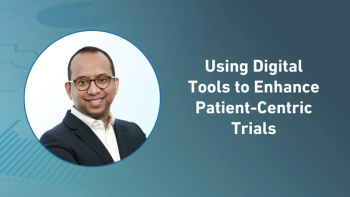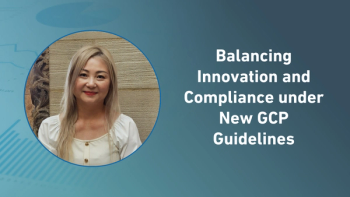
Dialogue with Your Data: Conversational Experience Is the New User Experience
With an AI-enabled virtual assistant as part of your clinical research toolkit, deriving insights from clinical data is as simple as asking a question.
Data collected during clinical trials, whether from Electronic Data Capture (EDC) systems or third-party sources (lab data, biomarkers, PK/PD data), involves intensive exploration, visualization, and analysis to ensure patient safety, data quality, and study integrity.
To gain insights from data today, end users must navigate through multiple reports and dashboards. While these can be useful tools, manual workflows make it more difficult to derive meaningful insights in an efficient way and building new reports and dashboards for every study requires significant effort.
This article will show how AI-based virtual assistants, trained to understand natural language, domain-specific vocabularies, and clinical trial standards such as SDTM, can be a valuable asset, primarily for clinical data management teams who typically maintain such systems for sponsors and CROs. Virtual assistants make it possible for data managers to avoid study-specific integrations and configurations, while automating access to insights that inform key decisions at just about every stage of clinical research.
Once established in a sponsor’s or CRO’s clinical research workflow, a virtual assistant can automatically extract insights from data across an entire study portfolio, while enabling data managers to simply converse with data to get the answers they need.
Intents, entities, and actions: how do clinical data virtual assistants work?
Virtual assistants are trained by data managers to classify natural language into predefined categories, known as intents, which define the scope of each virtual assistant’s capabilities. Adverse event analysis, medical histories, concomitant medications, drug exposure, and lab test results are all examples of intents supported by clinical data virtual assistants.
When a data manager, or other end user such as a biostatistician or medical monitor, enters some text to find an answer from a trained virtual assistant, the system classifies the text into a single intent or a series of intents. Users can provide feedback if any misclassifications are made, in order to improve the accuracy of the system over time.
The virtual assistant will also extract any entities referenced in the text that narrow the focus of a given intent. These include specific items, such as study names, site locations, and subject IDs.
Based on the intent and entities detected in a user’s question, the virtual assistant takes action, instantly combing through standardized data and displaying results as a table, graph, or sentence.
In order to ensure security, rules can be established that prevent unauthorized users from seeing certain data. Knowing who is asking a question gives the virtual assistant the ability to restrict or expand answers as required.
A Typical Data Conversation
Virtual assistants and process automation
The AI behind virtual assistants can also be used to automate many data management processes characterized by manual and siloed tasks. The following table illustrates some examples of clinical domain use cases and the user groups whose lives are made easier.
What makes a virtual assistant possible?
To provide meaningful and timely insights from data, virtual assistants need access to standardized data from multiple sources in near real time. For this to occur, the following capabilities must be available through a modern data analytics platform:
- Smart data ingestionAutomated data integration from multiple sources, such as EDC, labs, biomarkers, OMICS, EMR, wearables/sensors, and others.
- Standards and metadata managementPrecise definition of data elements across an organization, and the grouping of data element metadata across study hierarchies (global, therapeutic area, indication, and project level standards).
- Intelligent mappingStudy maps, created by machines based on hierarchical global maps and study metadata, enable the continuous generation of standardized data in different formats for different use cases, such as quality reviews, submission deliverable creation, and safety monitoring.
How do virtual assistants get better over time?
While virtual assistants are packaged with predefined intents common across the clinical domain, they must have the capacity to learn to assist with additional intents and entities specific to each client.
Using deep learning models that already understand natural language and clinical vocabulary, new intents and entities can be introduced with relative ease. These can include studies in a portfolio, site investigator names, patient demographic details, vital signs, lab, and EKG results, and much more. If information is stored in a data source, it can be used by a virtual assistant to enable a conversational experience (CX).
The training period for new intents averages about one or two weeks and includes the collation of conversation samples and integration with database-executable functions. After training, the virtual assistant’s ability to understand the new intents and entities is verified and users can begin asking pertinent questions.
Demographic Information and Lab Test Results
There’s a virtual assistant in your future
When looking for a virtual assistant to extract insights from data and create operational efficiencies, leaders in Data Management, Clinical Programming, and Clinical Operations should make sure the one they choose has the following key features:
- A unified experience for all clinical analytics needs
- Natural language search
- Pre-defined intents for study-, site-, and patient-level analysis
- Training capabilities for new intents and organization-specific entities
- Continuous feedback loop for ongoing improvement
Virtual assistants trained on natural language and clinical standards such as SDTM offer an efficient new way for data managers, biostatisticians, and medical monitors to interact with--and gain insights from--clinical trial data.
Instead of navigating through multiple reports and dashboards, users can now derive insights through data “conversations” that can save time, reduce frustration, and create massive efficiencies across an entire clinical trial portfolio.
While virtual assistants can be integrated with SDTM data by direct upload, the true value of these AI-powered tools is realized as part of a larger, modern clinical analytics platform that automatically standardizes data from multiple sources in near real time.
This combination of an AI-powered virtual assistant and a modern clinical data platform opens a new and improved way of interacting with clinical data and obtaining the necessary clinical insights.
Srinivasan Anandakumar is the VP, Product Management, for Saama Technologies
Newsletter
Stay current in clinical research with Applied Clinical Trials, providing expert insights, regulatory updates, and practical strategies for successful clinical trial design and execution.




